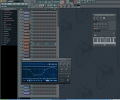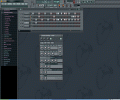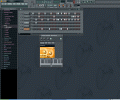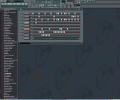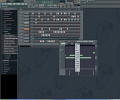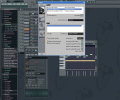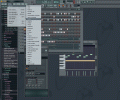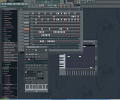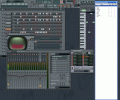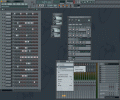I guess everybody loves some kind of music, be that hip-hop, classical, trendy pop or extreme metal; I can't imagine the modern man without the presence of music. Despite being an extremely wide spread social phenomenon, there aren't but rather few individuals who actually make it the (semi)pro way; nevertheless the number of those who wonder how different kinds of music are made is growing day by day as newer and easier to use software emerges on the code-market and people seem to turn more and more towards music preoccupations.
From hyper-specialized small plugins and up to extensive all-in-one recording, editing, mixing, mastering and even publishing software bundles, computer programs tend to cover more and more of what making music may stand for, regardless of issues like recording piano sounds for a classical oeuvre or looping some funky breaks for a dancy tune, capturing the voices of a 40-people choir or overdriving the already ultra-brutally distorted guitar of a death metal band. And since music nowadays ain't what it used to be no longer than some 20 years ago (when serious instrument skills were an absolute must) and since it has a stronger digital/PC component, it's obvious that the software producers have instantly adapted to this situation and began to create more complex software which on one hand makes things easier, by having all the gear in one single location, and - on the other hand - looks more intelligible than 200 knobs and sliders next to other 300 LEDs flashing in a music studio. Let alone the room, weight and cost-related issues... :)
The Looks
It is quite impossible to write here about each of the windows popping out in Fruity Loops Studio and what thy are for (even graphically speaking), as the amount of space and time - both mine, as well as yours - is more than limited and writing about everything in this very complex software would take tens and hundreds of pages. Instead of enumerating the shapes and colors of the elements in Fruity Loops Studio I'd rather make a "fly over" so that your interest will be stirred and download FLS, if you haven't done this yet.
Fruity Loops Studio looks... hmm, truly "fruity". Meaning that its GUI is based on a very nice idea: making Fruity Loops Studio eye-comforting and as appealing as possible for the newbies, while still looking pro and extremely functional for those who make a living out of the audio production. I must note that the graphic developers of the Fruity Loops Studio have fully succeeded in their quest: the software not only has a very nice coloring but it also has true functionality - it is rather hard for me to write about graphics only because the graphic elements are going hand in hand so strongly with the working aspects that it's almost impossible to have them separated.
Fruity Loops Studio seems to have them all, from the traditionally-looking wave editor, to the piano roll, classic graphic representation of ADSR (attack-decay-sustain-release), oscillators, sequencers and almost everything you might think about when it comes down to music and sounds. Despite the huge amount of devices present in Fruity Loops Studio, the overall appearance is quite neat and tidy and as the users learn how to arrange things on-screen the GUI can actually house a multitude of smaller windows and plugin frontends, huge mixing/FX console and the rest of the Fruity Loops Studio features. All in a dark yet very readable coloring with (mostly) orange lighting completed with all sorts of red and greenish elements, making the use of this software a very warm and pleasant experience.
There are some slight skin options, but they won't make such a big difference and I'd rather call them "color scheming" in the best case. The generic commands and buttons the user would access are very intuitive so even if you haven't either seen or worked with Fruity Loops Studio before you'll be able to make some noise in the very first minutes of use; this is extremely important because it also has a psychological advantage: Fruity Loops Studio is a huge and complex piece of code and should it require a long time of working and setting up and tweaking from a highly-qualified user until the first sounds are produced it's most likely that the newbies would not spend too much efforts and would definitely not quit soon. In our case things are different, as the Fruity Loops Studio offers "noise" from the very first steps; and not only that it "offers", but the very first seconds are already accompanied by tweaking options which, you must admit, will make the first-time user's interest grow instantly.
Since everything in the Fruity Loops Studio is movable and resizable, it's very hard for me to make a description of how the main window looks: it can look as you want it to look, anywhere from a very ordered workspace (the recommended way, ha-ha-ha) or a chaotic and dismal mess in which even a large thing as the mixer would be hard to find (the less productive way, lol). I have to add that the Fruity Loops Studio has been drawn with a lot of care and it looks very stylish and at the same time very pro with its Flashy appearance and sleek'n'slightly 3D-ing everywhere you might look. I searched thoroughly for a wrong-looking element, but I have found none: no matter how simple or complex a popping window might look, it "goes" just fine with the rest of the program GUI and this is a very clear sign of a truly professional design and manner of thinking things out.
The Works
For it's intended use, Fruity Loops Studio does it all, I daresay, from recording to looping, sequencing and sound synthesis, FX-ing, inserts and mixing, MIDI-work and even mastering, should you consider installing the proper third-party additional software. Again, as I have said before, it's kind of difficult to write, even in few words, about ALL things one can do or achieve using the Fruity Loops Studio; it simply is too complex to be described in such a small article and I think I'd better highlight some of the nicest features, especially for those who haven't had the chance or curiosity to give it a try...after all, it is them who are the most important people, as those who have worked with Fruity Loops Studio by now could already tell you far more things.
The first thing Fruity Loops Studio displays when it is started is the step sequencer - the device which actually guides the way your future songs will roll on. A maximum of 64 steps per channel will allow you to loop in and administer a serious amount of audio data - from simply setting the total number of steps needed for a certain sequence and de/activating the proper ones to obtain the needed sound and rhythm, up to complex direct-edit panning, volume envelopes, filtering and many more, everything is reachable within few clicks.
If you prefer editing the MIDI way, there's truly no problem at all as the piano roll is also at hand and it will ensure that you get where you want: simple overall use and easy-to-learn steps make a very fine experience. On one hand, this is the first-time users won't have to spend a century figuring out which does what in Fruity Loops Studio; on the other hand, people who are already used to working with the piano roll will surely be glad to see a very nicely ordered set of handy commands and a generic easy operation. The Playlist and the Mixer in Fruity Loops Studio allow you to gain full control of your work and the files you're working with; want to add a pre-recorded guitar track or some vocal parts, or even a new synth line? Nothing easier: just drag and drop the respective items in the playlist; and if you think managing all these is hard, think twice: Fruity Loops Studio will let you edit custom multipoint envelopes for volume and FX, panning and everything there is to sound. Even more control is gained when you'll use the huge mixer: you'll have access to direct management of 64 tracks and 4 sends, with 8 FX separate channels and 3 parametric shelves-filtering and full ASIO support, while being also capable of re-routing all effects available in any way you might think of. I'll just add the ReWire 2, and a whole new horizon of opportunities opens at your fingertips, limited by your imagination and skills only.
A wave editor and an extensive set of generators enrich even further the creative possibilities offered by Fruity Loops Studio: about 20 separate generators/instruments have been bundled in this piece of software and the number of additional DXi and VSTi programs can be installed and run in the Fruity Loops Studio, which is also huge.
From Slicer (which allows to actually cut sounds according to beats, using a powerful beat detection algorithm) to FPC (which is truly a nice drum machine quite similar to the Akai MPC) and from 3xOSC (a 3 subtractive oscillators complex) to Wave Traveller (allowing you to manipulate samples and closely replicate the vinyl scratches), the Fruity Loops Studio brings in a whole world of sound synthesis and management, sworn to produce professionally-sounding results that you'll be proud to present to anyone.
Together with dedicated VSTi and DXi support comes the groundbreaking ReWire2 technology which ensures unequaled compatibility with other ReWire-capable applications such as Propellerhead's ReBirth or Reason, Cakewalk Sonar and so on. In short, you'll be able to send and get back your audio work to any of the compatible sound applications, thus expanding the borders of your possibilities to dimensions unimaginable before. Native DXi and VSTi support and cross-usage via ReWire make sure you can work on almost anything, anywhere, with any available supported tools. Setting up all the needed things to transform your PC with Fruity Loops Studio may be a task the beginners will not be able to do with ease, but the intuitive and supportive way in which the program has been built will help even the newbies get things done in the end.
A very nice thing about the Fruity Loops Studio is that it comes already set up, so any user can start creating beats and loops immediately after finishing the install procedures. A great deal of help is provided by the browser in the (default) left side of the work space: a treeview of very well-grouped presets, blocks of instruments and samples, effects and clipboards; even recorded files can be easily accessed from this all-in-one handy location, so your Fruity Loops Studio experience is enhanced to the max. Despite the immense amount of knobs and sliders, drop menus and lights, understanding the basic functions of the Fruity Loops Studio is not at all an impossible task, even for the beginners: it just takes a little knack for sound-work and some attention paid to what's happening on the screen, and then things begin to look way clearer and easier.
Having a lot of oscillator-controls and being able to load custom instruments as well as customized samples and even more - being able to route and re-route almost everything through innumerable filters and additional processing units - makes working with Fruity Loops Studio a truly enjoyable experience which can easily end with professional results, be those radio jingles, ads, all sorts of DJ beats and even whole albums! Don't be afraid to try "everything which moves" in Fruity Loops Studio and, more importantly, don't give up when you won't get the perfect tune from the very first attempt: Fruity Loops Studio knows how things should be and it can also make them be as good as possible, but it's up to you to show the way!
The Good
There are a lot of good things in what Fruity Loops Studio stands for and, but there's no way I can enumerate them here; I'll just note the exceptional VSTi, DXi and ReWire support, along with the multitude of available items one can use and control until the proper sound is obtained. Even if Fruity Loops Studio is an almost pro-grade piece of code, the beginners can learn and use it with excellent results in little time and this means a better reach... which is good!
The Bad
I can't really think of bad things now: as far as I have explored Fruity Loops Studio, I have seen no bad things; maybe the Help files could be improved and get some sort of Idiot's Guide to FL Studio so more people could make a warm start with it.
The Truth
Fruity Loops Studio had no crashes, despite the rather chaotic treatment I managed to put it through and this means a highly reliable and stable programming, as well as the developers having thought of all sorts of "brutal mishaps" in the generic operation. The Fruity Loops Studio produces a very good sound and can deliver endless amounts of variations; and if you just go on and keep adding new supported software, Fruity Loops Studio can definitely turn into an extremely powerful and professional music tool. Ah, and the price is very good, one of the best $99 investments a music addict can make.
Now, before your first tunes, have your coffee at hand and see the screenshots below while you download Fruity Loops Studio:
 14 DAY TRIAL //
14 DAY TRIAL // 